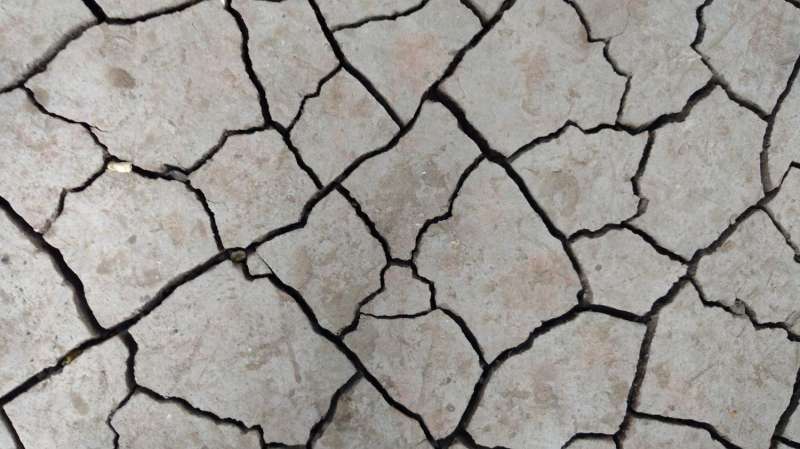Tectonic plates 'weaker than previously thought,' say scientists

Experiments carried out at Oxford University have revealed that tectonic plates are weaker than previously thought. The finding explains an ambiguity in lab work that led scientists to believe these rocks were much stronger than they appeared to be in the natural world. This new knowledge will help us understand how tectonic plates can break to form new boundaries.
Study co-author Lars Hansen, Associate Professor of Rock and Mineral Physics in Oxford University's Department of Earth Sciences, said: "The strength of tectonic plates has been a major target of research for the past four decades. For plate tectonics to work, plates must be able to break to form new plate boundaries. Significant effort has gone into measuring the strength of the key olivine-rich rocks that make up plates using laboratory experiments.
"Unfortunately, those estimates of rock strength have been significantly greater than the apparent strength of plates as observed on Earth. Thus, there is a fundamental lack of understanding of how plates can actually break to form new boundaries. Furthermore, the estimates of rock strength from laboratory experiments exhibit considerable variability, reducing confidence in using experiments to estimate rock properties."
The new research, published in the journal Science Advances, uses a technique known as 'nanoindentation' to resolve this discrepancy and explain how the rocks that make up tectonic plates can be weak enough to break and form new plate boundaries.
Dr Hansen said: "We have demonstrated that this variability among previous estimates of strength is a result of a special length-scale within the rocks - that is, the strength depends on the volume of material being tested. To determine this we used nanoindentation experiments in which a microscopic diamond stylus is pressed into the surface of an olivine crystal. These experiments reveal that the strength of the crystal depends on the size of the indentation.
"This concept translates to large rock samples, for which the measured strength increases as the size of the constituent crystals decreases. Because most previous experiments have used synthetic rocks with crystal sizes much smaller than typically found in nature, they have drastically overestimated the strength of tectonic plates. Our results therefore both explain the wide range of previous estimates of rock strength and provide confirmation that the strength of the rocks that make up tectonic plates is low enough to form new plate boundaries."
The study was an international collaboration involving scientists from Stanford University, the University of Pennsylvania, Oxford University and the University of Delaware.
Dr Hansen added: "This result has implications beyond forming tectonic plate boundaries. Better predictions of the strength of rocks under these conditions will help inform us on many dynamic processes in plates. For instance, we now know that the evolution of stresses on earthquake-generating faults likely depends on the size of the individual crystals that make up the rocks involved. In addition, flexing of plates under the weight of volcanoes or large ice sheets, a process intimately linked to sea level on Earth, will also ultimately depend on crystal size."
More information: "Size effects resolve discrepancies in 40 years of work on low-temperature plasticity in olivine" Science Advances (2017). advances.sciencemag.org/content/3/9/e1701338
Journal information: Science Advances
Provided by University of Oxford



















